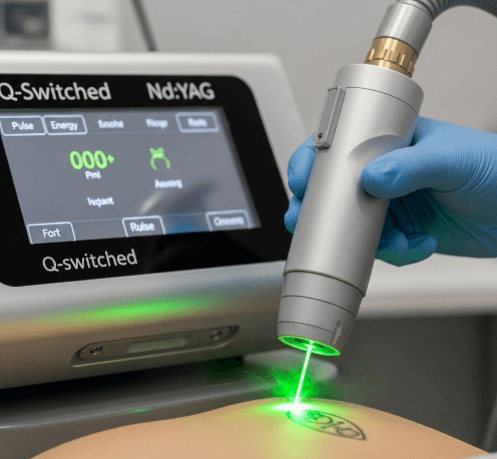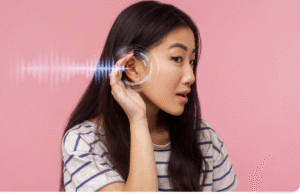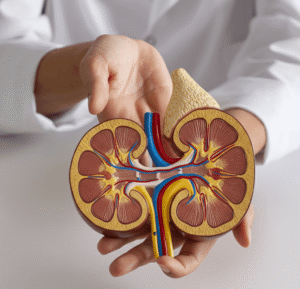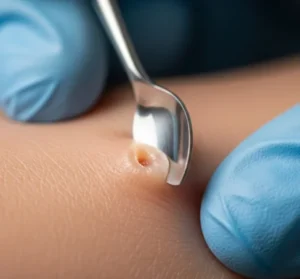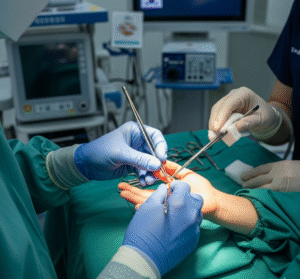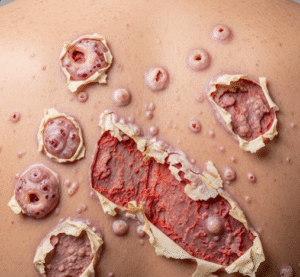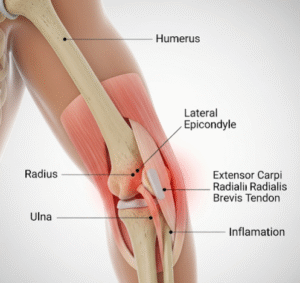Q-switched Nd:YAG in Korea is one of the most established and widely used laser treatments for pigmentation, tattoo removal, and skin rejuvenation. This technology, which uses nanosecond pulses, has been a cornerstone of dermatology for years and continues to be trusted for its versatility, safety, and effectiveness.
Korean dermatology clinics, known globally for their expertise in treating pigmentation-prone Asian skin, have perfected the use of Q-switched Nd:YAG lasers by combining them with other modern therapies and holistic aftercare. It remains one of the most accessible and affordable treatments in Korea, especially for patients seeking solutions for melasma, freckles, or unwanted tattoos.
What It Is
The Q-switched Nd:YAG laser is a non-ablative laser that delivers high-intensity light energy in very short nanosecond pulses. “Q-switching” refers to a method that allows the laser to release energy in sudden bursts, powerful enough to shatter pigmentation and ink particles without damaging the surrounding skin.
Key wavelengths include:
- 1064 nm → Deeper penetration, ideal for melasma, deeper pigmentation, and tattoo removal.
- 532 nm → Targets more superficial pigmentation like freckles and sunspots.
In Korea, the Q-switched Nd:YAG is often used for:
- Pigmentation disorders (melasma, freckles, age spots).
- Post-inflammatory hyperpigmentation (PIH) from acne.
- Tattoo removal.
- General skin rejuvenation and toning.
Why It’s Done
Patients undergo Q-switched Nd:YAG treatments in Korea for several reasons:
- Medical reasons → Safe and effective for melasma, PIH, and other pigmentation disorders.
- Cosmetic reasons → Improves dullness, brightens overall tone, and reduces fine lines.
- Tattoo removal → Breaks down ink particles, especially black and dark blue.
- Preventive care → Many people in Korea use the treatment to maintain clarity and smoothness, preventing pigmentation from worsening.
The popularity of this laser comes from its balance of safety, affordability, and effectiveness, especially for Asian skin.
Alternatives
While Q-switched Nd:YAG is a staple, Korean clinics offer several alternatives depending on patient needs:
- Pico lasers (PicoWay, PicoSure Pro) → More advanced, with pico-second pulses for improved precision and safety.
- Laser toning (low-fluence Nd:YAG) → Gentle multiple-pass technique for brightening.
- Chemical peels with glycolic or lactic acids.
- Microneedling with brightening ampoules.
- IPL (Intense Pulsed Light) for pigmentation and redness.
- Whitening injections or IV therapy (Vitamin C, glutathione).
Preparation
Korean dermatology clinics emphasize careful preparation before starting treatment.
- Consultation → A detailed skin analysis with imaging tools is performed to measure pigmentation depth and skin sensitivity.
- Pre-care instructions → Patients are advised to avoid sun exposure, tanning, retinoids, and chemical exfoliants before treatment.
- Skin hydration → Using moisturizers and sheet masks helps prepare the skin.
- Customization → Dermatologists choose between 1064 nm and 532 nm wavelengths depending on the pigmentation type.
How It’s Done
A Q-switched Nd:YAG session in Korea usually takes 15–30 minutes:
- Cleansing – The skin is cleansed to remove impurities and makeup.
- Protection – Eye shields are applied.
- Laser application – The dermatologist delivers nanosecond pulses in multiple passes. Patients may feel mild stinging or a snapping sensation.
- Post-care – Soothing creams, cooling masks, or LED therapy are provided.
- Final step – Sunscreen and moisturizer are applied.
For tattoo removal, the laser settings are adjusted according to the ink color and depth, and multiple sessions are required.
Recovery
Recovery is relatively quick, though slightly longer compared to pico lasers.
- Immediately after → Redness, swelling, or mild pinpoint bleeding may occur.
- Short-term care → Patients are instructed to avoid direct sun exposure, hot baths, or saunas for a few days.
- Skin care → Hydrating creams and SPF 50+ sunscreen are essential.
- Results → Pigmentation gradually fades over multiple sessions, while tattoos may require 6–10 treatments for full removal.
In Korea, clinics often provide complimentary aftercare services, such as cooling masks or hydration treatments, within a few days of the procedure.
Complications
Q-switched Nd:YAG is generally safe, but complications can occur if aftercare is not followed.
- Temporary redness, swelling, or dryness.
- Crusting or scabbing in treated pigmentation areas.
- Hyperpigmentation or hypopigmentation in rare cases.
Korean clinics minimize risks by tailoring energy levels to each patient’s skin type, performing patch tests when necessary, and emphasizing preventive aftercare.
Treatment Options
Korea offers a variety of specialized Q-switched Nd:YAG programs:
- Laser toning protocols for melasma and brightening.
- Pigmentation spot removal sessions targeting freckles, age spots, or birthmarks.
- Tattoo removal packages with multiple sessions at affordable rates.
- Q-switched Nd:YAG plus Aqua Peel for cleansing and brightening.
- Q-switched Nd:YAG plus Vitamin C infusion for antioxidant support.
- Combination programs with HIFU or fractional lasers for anti-aging benefits.
Many Seoul clinics, especially in Gangnam, offer multi-session deals to make treatments cost-effective for both locals and international patients.
Conclusion
Q-switched Nd:YAG in Korea remains one of the most reliable and versatile treatments for pigmentation, tattoos, and skin rejuvenation. Despite the rise of newer pico lasers, it continues to be a trusted standard because of its effectiveness, affordability, and adaptability to different skin concerns.
With Korea’s world-class dermatologists, advanced aftercare protocols, and emphasis on safety, patients can achieve long-lasting improvements in clarity, brightness, and overall skin health. For those seeking a balance of proven results and cost efficiency, Q-switched Nd:YAG in Korea is a highly recommended choice.

